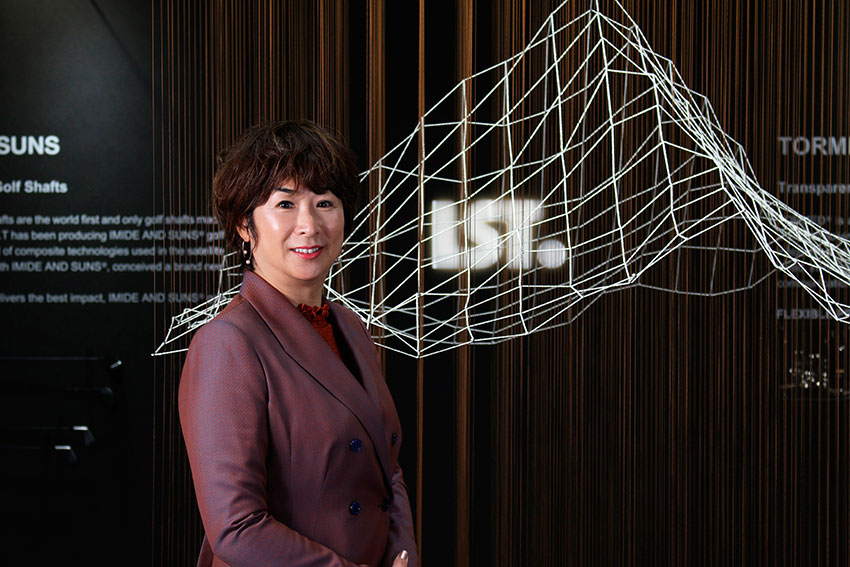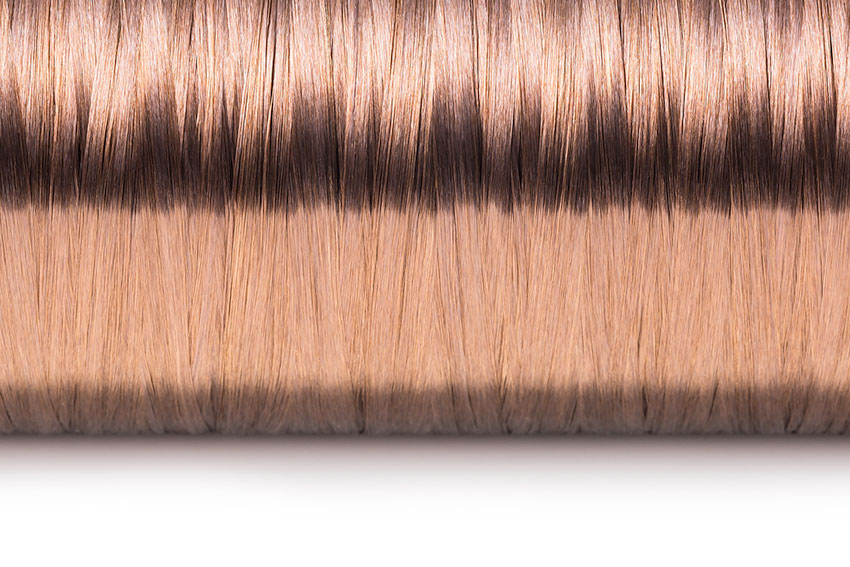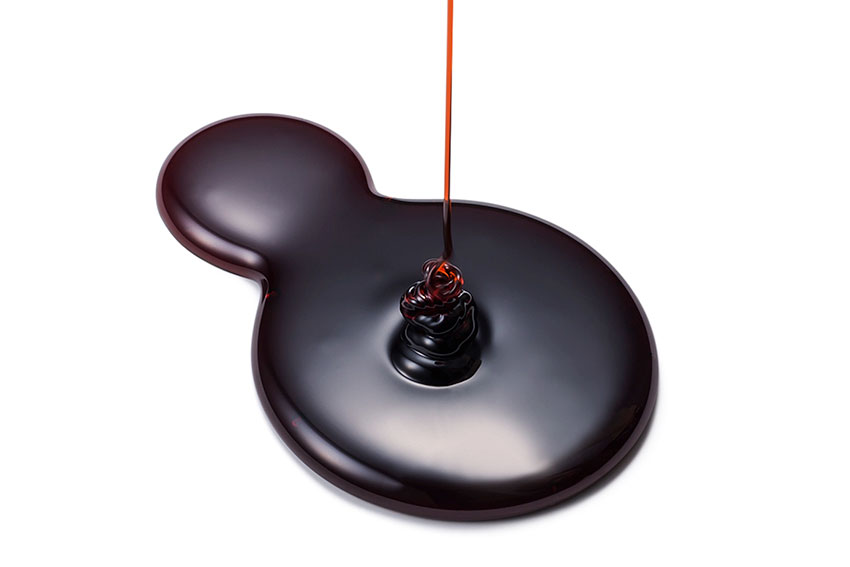With an extensive know-how in end-to-end manufacturing of new materials, I.S.T Corporation is aiming to further broaden horizons outside of Japan.

What would you say is IST's uniqueness or manufacturing philosophy?
We are a material brand, but it's not just about products. Our forte is that we constantly add new value to existing materials, as well as strive to develop new ones.
Our philosophy is “make the impossible, possible”.
We are different from other material companies because we integrate the entire production process in-house from the raw material to the customer’s products. Once our original materials are introduced to a potential customer/collaborator, we’d start joint research and development for the customer’s finished products. After the customer finalizes their specifications of the product, we develop all the methods including the manufacturing of the raw material itself, the production and quality testing, and the design of the actual production machine.
About one third of our employees are related to R&D. Whether it be chemical, mechanical, or production development, R&D is at the heart of our competitiveness. Being kept in-house makes everything more secure, unique, and special.
Can you think of a particular product that best exemplifies your capacity to create specialized materials?
The polyimide tubes used in laser printers are a good example. Jointly with our customer, we developed a core system in the laser printer with our polyimide tube that saves a tremendous amounts of energy, increases the printing speed, and reduces the size of the printer which makes the distribution more eco-friendly. This technology was a revolution in the printing market and now we supply polyimide tubes to almost 50% of the global market.
As someone serving as a bridge between the US and Japan, and who has a background in both countries, what do you feel is the biggest misperception or challenge you face? What does the US not understand, or misinterpret, about Japanese manufacturers?
Americans’ understanding of Japanese manufacturers is accurate for the most part. On the other hand, unfortunately, Japanese manufacturers focus too much on the Asian market regarding market share and costs. Therefore, Japanese manufacturers don't invest enough manpower, time and money into future developments, and are often left behind. They remain unbeatable in technological precision and enhancement but need to strengthen marketing and research and become more vocal in their self-promotion so the global industry will recognize their abilities more widely.
We absolutely agree that it's less of an innovation problem and more of a communication problem, not only in terms of, as you said, communicating your technologies or strengths to foreign markets, but also being able to understand the needs that are coming from those foreign markets and responding to them. You said this is becoming a focus for you and your business. Can you give us some more details on your strategy? How are you trying to overcome the communication challenge?
We found that our challenge, which is probably the same for many Japanese businesses, is that our mindset is outdated. We Japanese people always want to be perfect. We have to introduce things to the world only once they are already perfect, but I don't think that reflects the current world or our current market.
American technology companies on the other hand, are less inhibited by that kind of perfectionism, releasing a preview of even unfinished development to reach out to potential collaborators or investors before the technology becomes outdated. This can speed up and add value to the development.
You mentioned before that your secrets are very important. You have to keep things close to your chest. At the same time, you have to take some risk in putting yourself out there to receive these kinds of inquiries. How do you reconcile those two things, and what role does collaboration play in your company?
We are a material brand, not specialized in creating end products for any specific industry.
Therefore it’s very important for us to collaborate with leading companies in order to deliver innovative products to consumers. As a solution, when deciding who to collaborate with we carefully select companies with a long-term vision and a high level of development capabilities and resources. By doing so, I believe we can grow together in a trusted relationship.
What kind of companies are you collaborating with, and what kind of partners are you looking for?
One of our target markets is the composite industry, especially in the sporting goods market. We have started joint research with a top sporting goods company in Europe. Our newest development is a polyimide fiber, IMIDETEX®︎, not only has the polyimide’s characteristics of being high strength and high temperature resistant, but it is also flexible, light weight and shock absorbing. This could provide better performance in sports and less impact on human bodies. We see huge potential in and beyond the sporting goods industry.

Another example of collaboration project is our low color polyimide film, TORMED®︎ . We’ve been working with print circuit manufacturers in Japan. Through this collaboration, we have successfully created a clear flexible print circuit, which has been used in augmented reality (AR) headsets widely used for virtual trainings including the U.S. Army.
You mentioned your product IMIDETEX®, and among its strengths are its flexibility and strength, and it's also very sustainably produced. To my understanding, it only discharges 1/8 of carbon dioxide in its production compared to conventional carbon fiber products. I know you want to show the result without revealing the method, but can you tell us a little bit about the development history of this product and how you were able to manufacture it in a way that’s so sustainable?
Carbon fiber can withstand heat of 1000 degrees centigrade, but the most heat resistant material used with the carbon fiber in composite is polyimide, which can only withstand 400 degrees centigrade, maximum. So in the case of a fire, only the carbon fiber would be left intact. If we were to replace the carbon fiber with polyimide in composites, it would be much more sustainable because the carbon dioxide discharge level is much less in the production process. That’s how IMIDETEX’s research and development started.
You mentioned trying to find a market where the consumer has this kind of “wow” effect. Can you tell us a little more about what motivated some of these original brand products like IMIDE AND SUNS golf shafts. Are these products intended for clients in the US and overseas markets as well, or is this just for Japan?
Being a material brand in the B-to-B market, it’s not always obvious where our materials are being used. However, by creating our own consumer products such as IMEDE AND SUNS®, we want consumers to directly experience our high-quality technologies and feel “wow.” I also wanted to be confident about our products’ performance used in final products. Having original brands such as IMIDE AND SUNS® is a great way to do that. At the same time we can gather and analyze performance data in the composite form, and integrate that data into our future development for the composite market.
Currently our market is Asia, but we would love to market worldwide.
In 1994, you expanded into New Jersey and then in 2005 into China. Can you tell us about the current focus of your international development strategy?
Our motivation has been to ensure the highest quality of our technology from the raw material to the finished product. It’s not necessarily the location that we are concerned about. As long as it relates to our development we are willing to explore any options.

SKYBOND polyimide varnish for heat-resistant composites
Regarding your international business, where do you see yourselves going next? Are there any other countries that you're considering, or are there any regions that you're targeting in terms of sales?
U.S. is the perfect environment for business development and establishment. Japan is known for high quality products and services. China is a big consumer market. Having resources in these locations, we are very happy with our current position.
A potential new market would be Europe because that is where our textile business has unlimited possibilities, as that is where the top Maisons are.
Let's say we come back to interview you again in 10 years' time for your company’s 50th anniversary. What would you like to tell us about your goals and dreams for the company in that timeframe, and what would you like to have achieved by then?
I would want to talk about lots of success stories yet remain a high technology and quality material brand.
0 COMMENTS